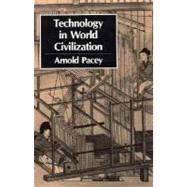Technology in World Civilization A Thousand-Year History
, by Pacey, Arnold- ISBN: 9780262660723 | 0262660725
- Cover: Paperback
- Copyright: 7/1/1991
Most general histories of technology are Eurocentrist, focusing on a main line of western technology that stretches from the Greeks through the computer. In this very different book Arnold Pacey takes a global view, placing the development of technology squarely in a "world civilization." He portrays the process as a complex dialectic by which inventions borrowed from one culture are adopted to suit another. Pacey's argument is both original and compelling. He demonstrates that western technology is an amalgam of cross-fertilizations from the great civilizations of China, India, and Islam and from the apparently primitive cultures of peasant farmers in Africa or Inuit hunters in the Arctic. In a lively and readable style, Pacey explains exactly how technologies (which he broadly defines to include such critical practices as agriculture and health care) were diffused across Asia to Africa and Europe, and then back again. A failure to appreciate the importance of this type of dialogue, Pacey observes, has often led to misguided programs that have sought to impose technologies on less developed nations without allowing for responsive innovation. Covering the period from 700 to 1970, Pacey contrasts innovations based on critical survival needs with high technologies symbolizing the values of major civilizations. Examples include the Chinese gunpowder that provoked a more formidable cannon in Europe, Indian textile techniques that spurred the Industrial Revolution in Britain, and transistors from the U.S. that stimulated new kinds of consumer products in Japan. In m any cases, Pacey notes, technology is less the result of a direct transfer than of the diffusion of stimuli. Even "a mere rumor of an unfamiliar technique" could produce new ways to achieve similar results.







